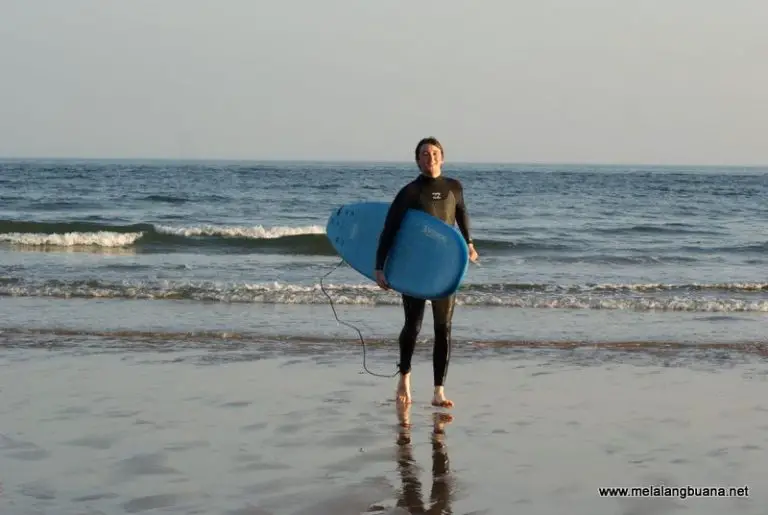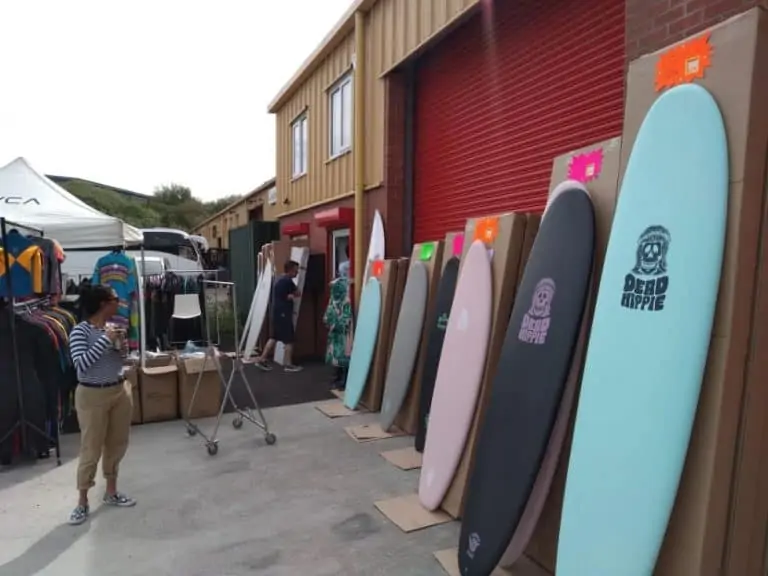Get the Right Surfboard for Your Child: Size, Cost and Level
Surfing is an absolutely wonderful outdoors activity for your kids.
It helps you drag them away from their screens into the fresh air and sunshine. It’s great for their balance, strength, coordination, fitness, and confidence.
Best of all, most kids absolutely love the feeling of messing around in the water and catching a few waves along the way!
However, choosing the right surfboard for your child isn’t always easy. There are so many different sizes, shapes and designs out there that it can feel extremely confusing if you’ve only ever bought adult surfboards before.
You’re also going to have quite a list of requirements, but in the main:
A good surfboard for your child should be easy to paddle, stand and catch waves on. It should provide stability, be designed to reduce their chances of getting injured and work for them as they grow. Finally, it should be cool enough for your child or teenager to feel proud of.
To help you out, we’ve put together a guide to buying surfboards for kids. We’ll explain what different types of surfboard are out there and which would make the best choice for you. Enjoy!
What kind of surfboards are suitable for kids?
Go shopping for your kid’s surfboard and you’ll be dazzled by an array of surfboards of all shapes and sizes. But it turns out that that surfboard design is based around seven key models, only a handful of which are suitable for kids.
Here are my top choices:
Softboard
As the name suggests, a softboard is a soft surfboard that is well suited for kids and beginner surfers. They’re often inexpensive and a great option if you just want to give surfing a try.
Surfboards with a softboard or ‘soft-top’ construction also help to reduce the risk of injury since they are more forgiving if falling on them (while riding) or if involved in a collision with others when falling or paddling.
Some also call these boards ‘foamies‘ and they are used by surf schools around the world, a testament to their surf-safety and learner-friendly design, yet again making them a great choice for your child.
Softboards are also the best option to avoid any rib pain from surfing, something which is quite common but can be avoided.
Funboard
Like a softboard, a funboard has a wider outline and is better suited to surfers who are just starting to learn.
It’s basically the fiberglass version of a softboard and works brilliantly in all conditions, although these would be suited to children who have some experience of surfing (or even skateboarding/snowboarding) already since.

Mini-mal surfboard
A mini-mal is a shorter version of the famous ‘Malibu’ longboard. It has a rounded nose and tail, it’s around 7-8’ long and it’s great for catching small to medium sized waves.
Fish surfboard
A fish surfboard has a distinctive fish-like tail that looks very cool. Their design means they can pack in the foam, making them much more buoyant and stable on the water. It’s great for all ages and skill levels.
Which type of surfboard should I buy for my kid?
Now that you’re more clued up when it comes to the jargon, let’s take a closer look at which of these surfboards would best suit your needs.
It’s generally best to consider your child’s age first, then narrow down your choices depending on their height and weight.
With that in mind, let’s consider which boards work best for each age group.
Surfboards for children under 6 years old
Young kids under the age of 6 usually don’t learn to surf (although there are always going to be exceptions to this rule!)
They’re usually better off messing around in the waves at the shore or enjoying a bodyboard. This will help them build their confidence in the waves and is a much safer option. Even if you did get them a proper surfboard at this age, they’d struggle to carry it or stand up, and they’d grow out of it very quickly.
If you’re a surfer, you could let your child hitch a ride on your board or even borrow one from another child, until they build the strength, skills, and confidence to get their own.
Of course, this age group is for guidance only- if you believe your child is ready to start learning to surf- check out the 6-12s section below.
Surfboards for older children and tweens: 6-12 years old
Kids who are under 12 should ideally have a softboard, also known as a foamie surfboard or a ‘soft-top’, when they start surfing.
As you’ve learned above, a softboard is a softer board that offers plenty of buoyancy and stability, so it’s easy to catch waves. This will help them grow in confidence as they learn to surf and it’s much less likely to hurt when they fall.
Be aware, though that softboards can be big and heavy, so make sure you have plenty of space to store it when you’re not in the water.
Surfboards for teenagers (13-18 years old)
Teenagers have much more choices when it comes to buying a surfboard. It entirely depends on their experience, skill, confidence, weight, and height.
For younger teenagers who are just learning to surf, it’s still best to start with a softboard to help them build their skills and grow in confidence.
After this point, a teenager’s surfboard options are as follows:
- they could upgrade to a funboard that allows them to build their skills further, but on a proper surfboard.
- For intermediate level surfers, a mini-mal is a great choice as they turn easily and make it much easier to catch waves.
- If your teen is experienced or a fast learner, they might love the fun look of a fish surfboard.
As exciting as this might be, it’s important not to rush the process and opt for a board that is better suited for a very advanced level. Otherwise, this could destroy their confidence and motivation to enjoy this amazing sport. Buoyancy and stability are still important, so keep this in mind when buying.
What size surfboard should I buy?
Surfboards also come in many sizes. Here’s some guidance to help you make the right choice:
| Child’s Weight | Softboard | Fish Surfboard | Mini-mal |
| < 65 lbs (30kg) | 5’5″ – 5’8″ | x | x |
| 65 – 90 lbs (30 – 40 kg) | 5’8″ – 6’2″ | 5’8″ – 6’2″ | x |
| 90 – 110 lbs (40 – 50 kg) | 6’2″ – 7’0″ | 6’2″ – 6’6″ | 6’8″ – 6’10” |
| 110 – 132 lbs (50 – 60 kg) | 7’0″ – 8’0″ | 6’6″ – 6’10” | 6’10” – 7’2″ |
| 132 – 154 lbs (60 – 70 kg) | 8’0″ | 6’10” – 7’0″ | 7’6″ – 8’0″ |
| 165 lbs+ (75 kg+) | x | x | 8’0″ – 8’6″ |
Conclusion
When your child is learning to surf, it’s important to find a surfboard that offers the right balance of stability, buoyancy, and control whilst also working well in a variety of conditions and encouraging them to keep learning.
Luckily, there are several different types of surfboard that can offer this combination of factors without breaking the bank.
When choosing, consider your child’s age, followed by their skill and experience level and height/weight. These will help you find the right kid’s surfboard that will last for many years to come.
Further Reading
If looking for a softboard or soft-top surfboard for your child, be sure to check out my full guide to the best beginner surfboard brands, which are all soft-tops!



